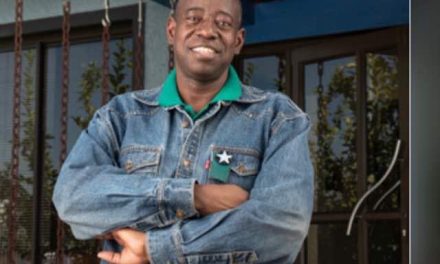
Getting the roar of the wild to London, Sydney or Washington with Logistics

By Logan Fransman
Director of the Namibian German Centre for Logistics (NGCL)
Logistics is all the activities involved in the movement of goods from one point to another both within and across borders. These activities include transport, cargo management, customs and border control and distribution among others.
If you think about it, whenever there is something needed by humans’ transport and handling is required. From beer, to food, to fashion and also as we living here in Namibia know, wildlife. No one really asks how do the lions, elephants or our majestic giraffes get to a zoo in London, Paris, Sydney or San Francisco? The answer is, logistics.
Contrary to the shipment of non-perishable and other non-critical items, the movement of animals requires meticulous planning under a variety of conditions and regulations. Animal welfare and care is an essential factor, plus those attending to the animals during travel. They say moving is one of the most stressful things that humans can do, more so for animals removed from their habitat or homes.
The transportation of an animal such as a hippo or a rhinoceroses to a zoo is not done on a whim. Months of planning goes into it and countless people and organisations are involved in it. Permits need to be in order, quarantine requirements need to be adhered to, and the shipping and receiving sides are time bound and therefore need to be ready. In addition to the measures that need to be put in place to reduce the stress of animals during transport, the evaluation of their destination needs to be done and clearance received, plus enclosures need to be equipped to keep wildlife organisations and animal welfare activists happy.
The complexity of moving wildlife may be guided by theoretical knowledge gained through university education, however in a task or process that has very little room for error, you need special skills and experience.
That is why students pursuing a logistics qualification need to have theory that includes international or global logistics. We are fortunate to have qualifications here in Namibia that includes global supply chains. However few probably think they will be in charge of the logistics that involves moving an elephant, snakes or perhaps relocating a rhino to a safer location. Safe from poachers.
A logistician might be essential in keeping rhinos from going extinct or giving an injured leopard a second chance at life without predators ready to pounce. The moving of animals requires the interaction and close coordination with other specialists especially regarding the health of the animals.
This means that a veterinarian specialised in wildlife and game is an essential part of the team. In some cases the lion, cheetah or elephants still need to be caught through means of sedation or boma capturing, and only when approved by the veterinarians can the transportation start. There are a lot of considerations to get a lion from a park into a cage and into an airplane without it going crazy. Or a couple of rhinos?
The process has to be done humanely, and to avoid injury. Transportation if allowed can be done with a truck however helicopters are often used to move animals from remote locations. Of course as mentioned, the animal’s welfare is of paramount importance. So a vet travels with the animal at all times, monitoring vital signs and making sure the animal is calm and hydrated.
Once loaded in an airplane for a distant flight, the animal needs to be kept as comfortable as possible in their box or cage, and there has to be adequate seating and facilities for the specialists looking after the
animals during flight. Specialised containers and cages have been developed to hold wildlife during flights to minimise disturbances.. These are all things the person in charge of logistics needs be aware of.
Finally when it reaches it’s European, American or perhaps its destination in Brazil it still needs to get to the local zoo or animal part. So, the process of transporting the animal occurs again. Just think, driving along the motorway, you may be passing a truck with a hippo, rhino or a lion in it, without even knowing it. Pretty amazing and it is all thanks to logistics.
Finally the animal reaches the zoo and the process of acclimatising the animal happens so that eventually people all around the world get to experience seeing a lion, tiger, rhino or even a gorilla up close. Without the knowledge and experience of logisticians this could never have happened. As a professional working in logistics there’s never a dull moment and just think, you may wake up one day and realize your next project is shipping hippo’s. This will only excite you and not faze you in the least as you are an professional experienced logistician and are trained for just such projects.
It also fills you with pride knowing that people all around the world get to see and experience the majestic animals that Africa has to offer.












































